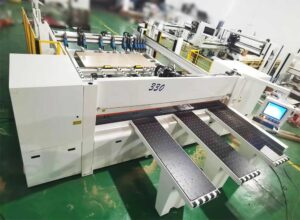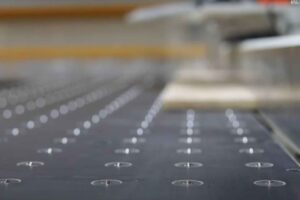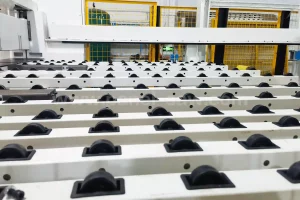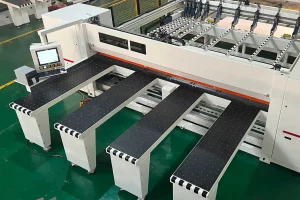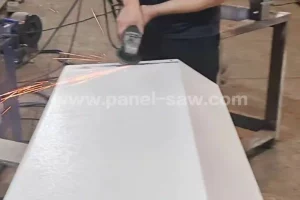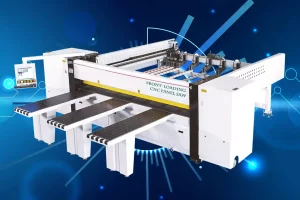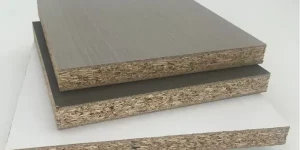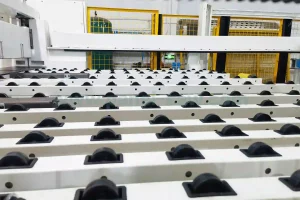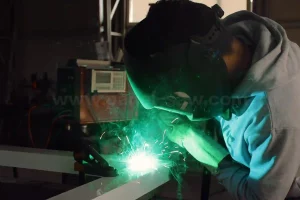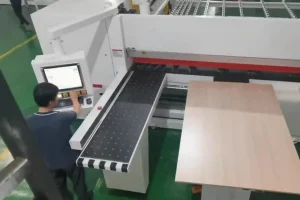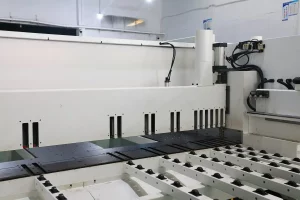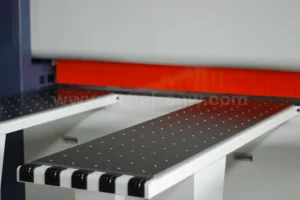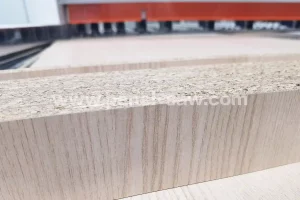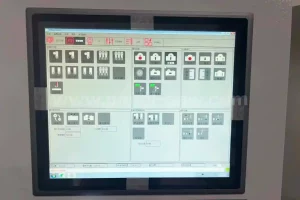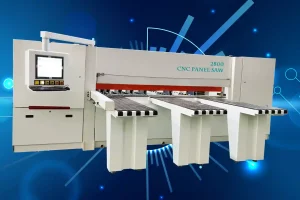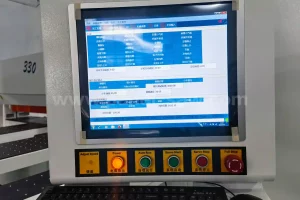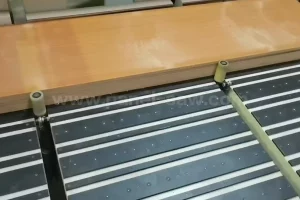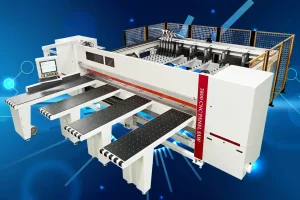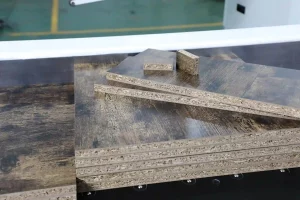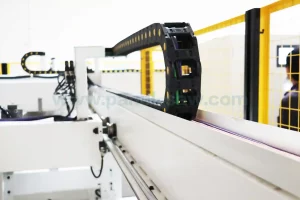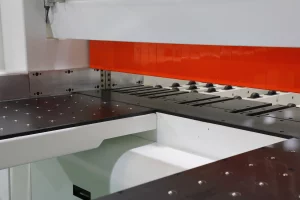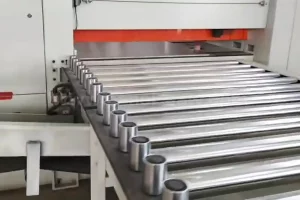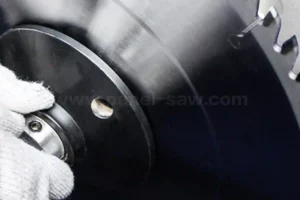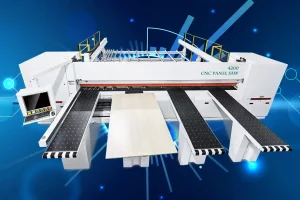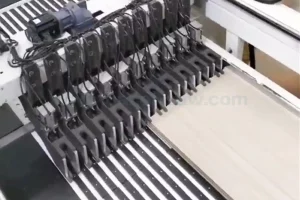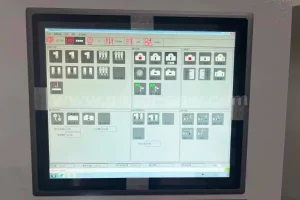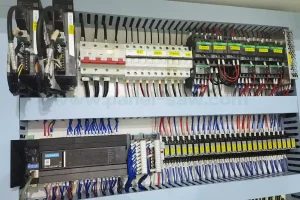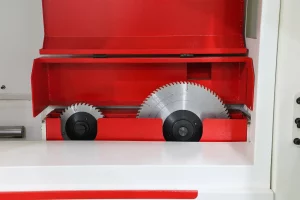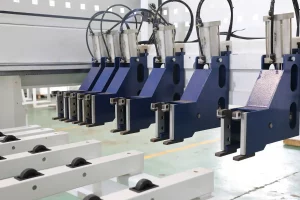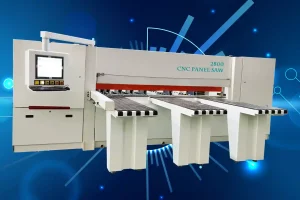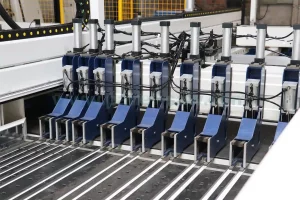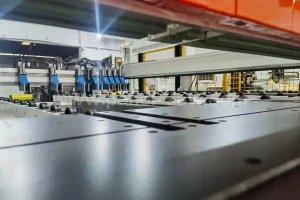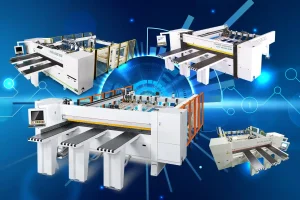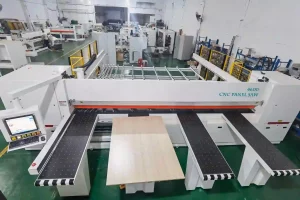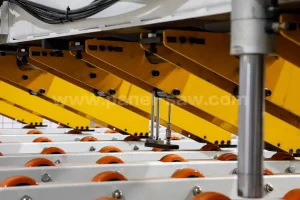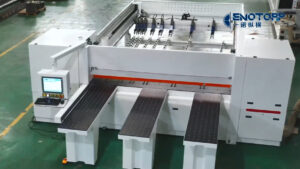
Processing Equipment CNC Panel Saw Performance for Precision and Efficiency
The precision and efficiency of CNC panel saws are vital to the success of modern manufacturing and fabrication processes. To achieve optimal performance, careful consideration must be given to the optimization of these machines. By implementing strategic approaches to optimize CNC panel saw performance, manufacturers can enhance both the accuracy and speed of their production. This article delves into key strategies for optimizing the performance of processing equipment CNC panel saws.
Accurate Material Handling in Processing Equipment CNC Panel Saw
One key aspect of optimizing processing equipment CNC panel saw performance is ensuring accurate and consistent material handling. Precise material handling systems minimize the risk of material deflection and ensure that the saw blade makes contact with the material at the desired location.
Introduction: Accurate material handling is crucial for the performance of processing equipment CNC panel saws. By implementing high-precision material handling systems, manufacturers can achieve tighter tolerances and improve the overall quality of their products.
Accurate material handling is essential in CNC panel saw operations because any deviation can lead to significant errors in the final product. High-precision material handling systems are designed to reduce deflection and ensure that the material is consistently fed into the saw at the correct angle and position. This consistency is vital for maintaining the high tolerances required in modern manufacturing.
For instance, in the furniture industry, where pieces need to fit together perfectly, even a slight error in cutting can result in gaps and misalignments that affect the final product’s quality. By investing in advanced material handling systems, manufacturers can ensure that every cut is made exactly as intended, reducing waste and increasing efficiency.
Conclusion: Implementing precise material handling systems minimizes the risk of material deflection, ensuring that the saw blade makes accurate contact with the material. This leads to improved product quality and tighter tolerances, making material handling a critical component in optimizing CNC panel saw performance.
Blade Selection for Optimal Cutting in Processing Equipment CNC Panel Saw
Another crucial factor in optimizing processing equipment CNC panel saw performance is blade selection. The selection of the appropriate blade is vital to ensure optimal cutting performance. Factors such as material type, thickness, and cutting geometry should be carefully considered when choosing a blade.
Introduction: Blade selection plays a pivotal role in the performance of processing equipment CNC panel saws. Choosing the right blade based on material type, thickness, and cutting geometry is essential for achieving optimal cutting speed, accuracy, and surface finish.
Choosing the right blade for the specific material being cut is essential for maintaining efficiency and precision. Different materials require different types of blades. For example, cutting wood requires a different blade than cutting plastics or composites. The thickness of the material also dictates the type of blade needed; a thicker material might require a blade with fewer, larger teeth, while a thinner material might be best cut with a blade with more, smaller teeth.
The geometry of the cut is also important. For instance, rip cuts and crosscuts require different blade geometries. Rip blades, which cut along the grain of the wood, have fewer teeth and larger gullets, which help remove the larger chips created during the cut. Crosscut blades, on the other hand, have more teeth and smaller gullets, producing a finer finish by making smaller chips.
Conclusion: By selecting the appropriate blade for the application, manufacturers can significantly enhance cutting speed, accuracy, and surface finish. Careful consideration of blade type ensures optimal performance, making it a key strategy in optimizing CNC panel saw operations.
Optimizing Feed Rate and Depth of Cut in Processing Equipment CNC Panel Saw
Furthermore, optimizing the feed rate and depth of cut can significantly enhance processing equipment CNC panel saw performance. By carefully controlling the feed rate, manufacturers can ensure that the saw blade cuts at a consistent pace and depth, maintaining accuracy and preventing material defects.
Introduction: Optimizing feed rate and depth of cut is essential for maintaining the performance of processing equipment CNC panel saws. Consistent feed rate and appropriate depth of cut ensure accurate and defect-free cuts, contributing to the overall efficiency of the production process.
The feed rate is the speed at which the material is fed into the saw blade, while the depth of cut is how deep the blade cuts into the material with each pass. Both parameters need to be optimized to match the material being cut and the desired final product.
A feed rate that is too fast can cause the blade to overheat and the material to tear out, resulting in rough cuts and potential damage to both the material and the saw. On the other hand, a feed rate that is too slow can cause burning and waste time, reducing overall efficiency. Similarly, an improper depth of cut can lead to poor surface finish and increased wear on the blade.
Conclusion: By optimizing the feed rate and depth of cut, manufacturers can achieve the desired material removal without compromising the integrity of the remaining material. This consistency helps maintain accuracy and enhances the overall performance of CNC panel saws.
Regular Maintenance for Longevity of Processing Equipment CNC Panel Saw
Moreover, regular maintenance and inspection of the processing equipment CNC panel saw are essential for optimal performance. Regularly cleaning and lubricating moving parts prevent wear and tear, while inspecting the saw blade for signs of damage or dullness maintains accuracy and prevents premature failure.
Introduction: Regular maintenance is a cornerstone of optimal performance for processing equipment CNC panel saws. By implementing a comprehensive maintenance schedule, manufacturers can ensure that their CNC panel saws remain in optimal working condition.
Maintenance includes cleaning, lubrication, and inspection of all components of the CNC panel saw. Dust and debris can accumulate on the machine, causing parts to wear out faster or even leading to mechanical failures. Regular cleaning helps prevent these issues. Lubrication is also crucial, as it ensures that moving parts operate smoothly and reduces friction that can cause wear and overheating.
Regular inspections help identify potential problems before they become serious. Checking the saw blade for signs of wear or damage, for example, can prevent poor cuts and reduce the risk of blade failure during operation. Replacing worn or damaged blades and parts before they fail can save time and money in the long run.
Conclusion: Maintenance routines, including cleaning, lubrication, and blade inspection, prevent wear and tear and ensure sustained accuracy. Regular maintenance is vital for the longevity and performance of CNC panel saws, making it an indispensable part of the optimization process.
Optimizing processing equipment CNC panel saw performance requires a multifaceted approach involving accurate material handling, appropriate blade selection, optimized feed rate and depth of cut, and regular maintenance. These strategies enhance the precision and efficiency of CNC panel saws, leading to improved product quality and increased profitability. By implementing these optimization techniques, manufacturers can significantly elevate their production processes and achieve superior results.
FAQ
Q: Why is accurate material handling important for processing equipment CNC panel saws? A: Accurate material handling ensures that the saw blade makes precise contact with the material, minimizing deflection and improving product quality and tolerance.
Q: How does blade selection affect the performance of a processing equipment CNC panel saw? A: Selecting the appropriate blade based on material type, thickness, and cutting geometry enhances cutting speed, accuracy, and surface finish, optimizing overall saw performance.
Q: What is the significance of optimizing feed rate and depth of cut in CNC panel saws? A: Optimizing feed rate and depth of cut ensures consistent and accurate cuts, preventing material defects and maintaining the integrity of the remaining material.
Q: How does regular maintenance impact the performance of processing equipment CNC panel saws? A: Regular maintenance, including cleaning, lubrication, and blade inspection, prevents wear and tear, ensures sustained accuracy, and prolongs the lifespan of the saw.
Q: What are the key strategies for optimizing the performance of a processing equipment CNC panel saw? A: Key strategies include implementing precise material handling systems, selecting the appropriate blade, optimizing feed rate and depth of cut, and conducting regular maintenance and inspections.
Q: How do these optimization strategies contribute to increased profitability? A: These strategies enhance production efficiency, improve product quality, and reduce material waste, leading to increased profitability for manufacturers.
Q: Can optimizing CNC panel saw performance help reduce production costs? A: Yes, optimizing CNC panel saw performance can help reduce production costs by minimizing material waste, reducing downtime through proper maintenance, and enhancing overall efficiency, leading to lower operational costs and higher output.
Q: How often should maintenance be performed on processing equipment CNC panel saws? A: Maintenance should be performed regularly, with daily checks for dust and debris removal, weekly lubrication of moving parts, and monthly or quarterly inspections of blades and other critical components to ensure optimal performance and longevity.
Q: What role does technology play in optimizing CNC panel saw performance? A: Advanced technology in CNC panel saws, such as automated material handling systems and precision blade control, plays a crucial role in optimizing performance by ensuring consistent and accurate cuts, reducing manual intervention, and enhancing overall efficiency.
Q: Are there any specific training requirements for operating optimized CNC panel saws? A: Yes, operators should receive comprehensive training on the specific CNC panel saw they will be using, including understanding the importance of accurate material handling, blade selection, feed rate and depth of cut optimization, and regular maintenance to ensure safe and efficient operation.

